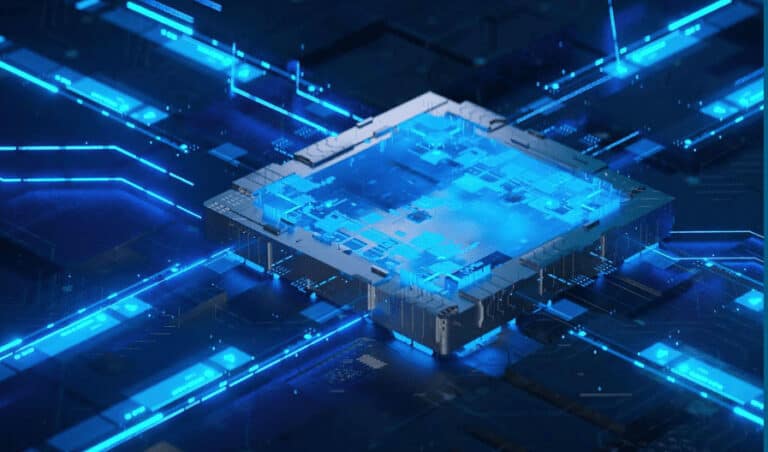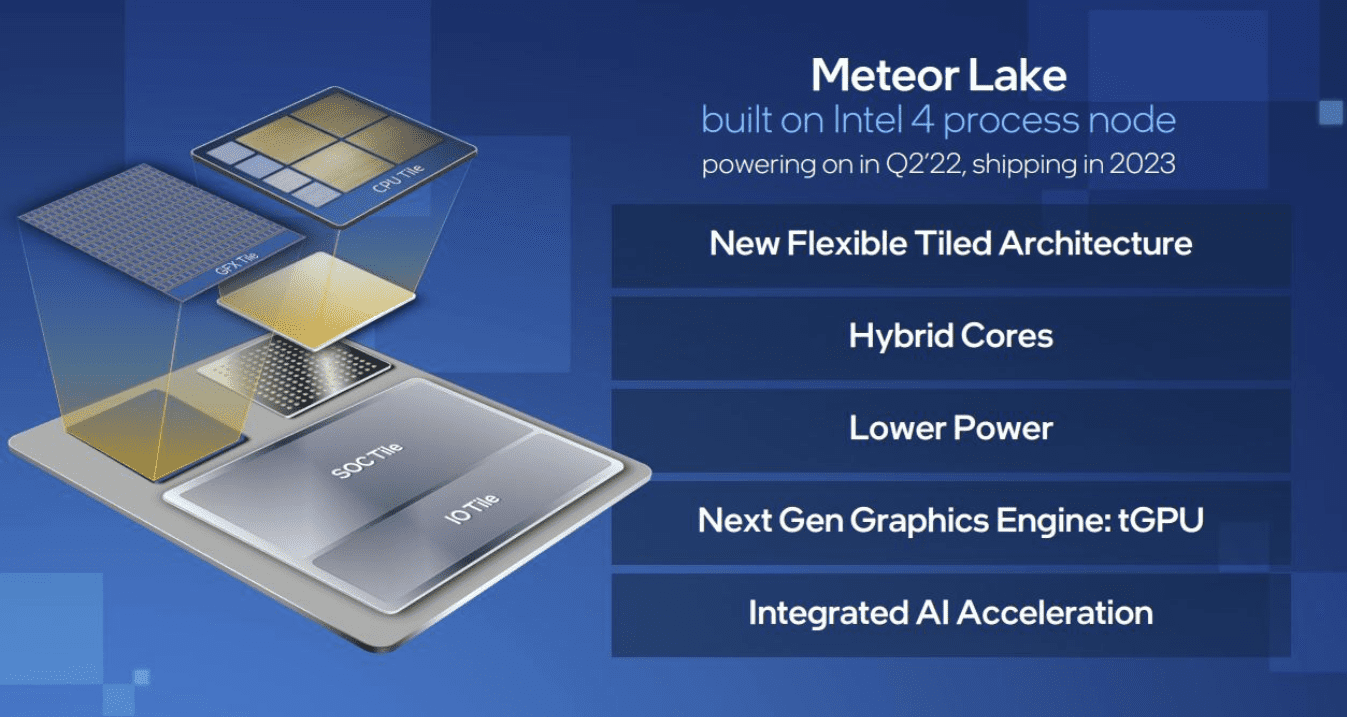Intel CEO Pat Gelsinger gave a sneak peek at the upcoming Meteor Lake chips. Meteor Lake chips consist of several chiplets instead of single silicon pieces. Intel’s Foveros technology helps arrange the chiplets in three dimensions to form a processor.
The most important announcement about the upcoming Meteor Lake processor series is that Intel no longer produces the chips through a single piece of silicon, but through several smaller ones. Gelsinger explained that the transistors that make up a processor are placed on multiple small modules.
The Meteor Lake processor consists of five different modules, which Intel refers to as chiplets. The primary chiplet is a CPU based on Intel’s new 7-nanometer process, also known as 4. This technology makes it possible to produce CPUs that have higher frequency speeds with the same power consumption as their predecessors.
The CPU chiplet is integrated with three other chiplets provided by TSMC. These three chiplets include a GPU, an I/O module for managing data input and output and a system-on-chip (SoC) tile. The SoC tile’s features are unknown at this time.
Three-dimensional Foveros technology
The four different chiplets will eventually be placed in a three-dimensional configuration on top of a fifth chiplet in the processor. This fifth chiplet is fabricated through Intel’s low-cost 22FFL process.
Foveros, a relatively new technology, is used to arrange the chiplets in three dimensions. The technology was also used to manufacture the now defunct Intel Lakefield processor. Foveros will be used for mass production for the first time with the arrival of Meteor Lake.
The technology will first be used for desktop and laptop processors, with data center processors following at a later date. Among other things, Foveros allows as many as 100 billion transistors to be placed on the chip. According to Gelsinger, this should be 1 trillion by 2030.
The technology is already used in Intel’s Ponte Vecchio processor. Other upcoming processors likely to be designed around Foveros are the Arrow Lake and Lunar Lake processors.
Chiplet manufacturing through other vendors
Flexibility is the rationale behind the remarkable composition of Meteor Lake processors. Foveros allows Intel to use the chiplets of other suppliers and combine them with its own.
Additionally, it gives manufacturers much more flexibility in the design of their processors. Foveros also simplifies the manufacturing process and ensures that the shortcomings of one chiplet can be strengthened by another.

